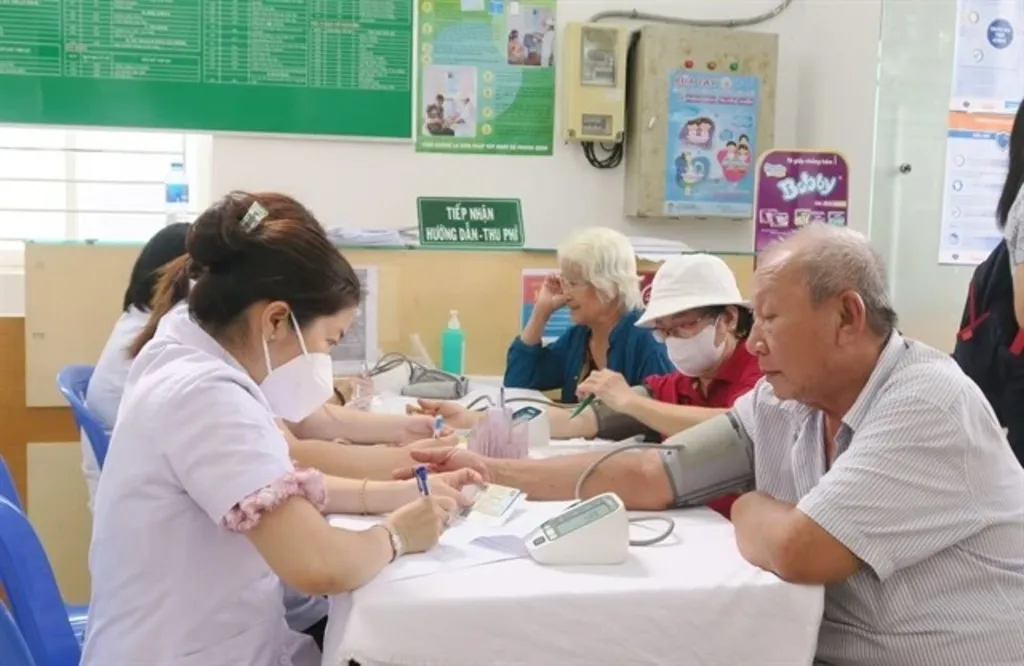 |
| Senior citizens receive free health check-ups at the health facility of Ward 9, District 8, Ho Chi Minh City __Photo: VNA |
The Ministry of Health is currently gathering public input on revisions to the Law on Health Insurance, aiming to eventually provide free medical care for all citizens, in line with recent directives from Party General Secretary To Lam.
Deputy Minister of Health Tran Van Thuan shared this information at a seminar titled “Enhancing Patient Benefits in Diagnosis and Treatment”, co-hosted by the Ministry of Health and Tien Phong newspaper on May 8.
According to Deputy Minister Thuan, one of the major strategic breakthroughs emphasized by Party General Secretary To Lam is “providing annual health check-ups for every citizen and gradually moving toward universal free hospital care.” The health sector has outlined a roadmap from 2026-35, focusing on key tasks to gradually realize these two major goals.
Specifically, in the 2026-30 period, the sector aims to ensure that 90 percent of the population has full access to preventive healthcare services, 100 percent is covered by health insurance, and all citizens receive health check-up every year. It also plans to develop lifelong electronic health records. Out-of-pocket healthcare payments will be reduced to below 20 percent, and co-payments under health insurance to below 10 percent.
During 2031-35, the Ministry of Health will continue to improve the legal framework and gradually implement policies to provide free healthcare for all. By 2045, people will incur no additional costs for services covered by health insurance.
However, experts caution that free hospital care requires a detailed and phased implementation plan. Dr. Tran Chi Cuong, Director of SIS Can Tho Hospital, said that the term “free” must be clearly defined in terms of scope and applicable groups. “Does ‘free’ mean a patient is fully covered and pays nothing at all, or only partially?” he asked.
Associate Professor Dr. Pham Ngoc Dong, Director of the Vietnam National Eye Hospital, emphasized that while patients are not required to pay fees, other financial sources are still needed to offset these costs. Although over 90 percent of the Vietnamese population is covered by health insurance, fully free medical services are not yet feasible. As Vietnam’s basic salary remains low, health insurance contributions are limited compared to actual costs. He suggested that contributions should be based on income instead of the basic salary level. Given that most medical equipment and drugs are imported at international prices, while insurance contributions are calculated based on domestic income, this could lead to an imbalance in the Health Insurance Fund. Hence, adjusting health insurance contributions to a percentage of income could strengthen the Fund and expand its coverage capacity, he proposed.
By the end of 2024, Vietnam’s health insurance coverage had reached 94.2 percent. Vulnerable groups such as the poor and children under six are fully or partially subsidized by the State, while workers and retirees contribute to the Health Insurance Fund based on their actual salary or the basic salary level.
The Health Insurance Fund remains balanced. However, expanding benefits, increasing payouts, and adjusting service fees require the health sector to reconsider contribution structures to match the payment capacity of different groups and the state budget.- (VLLF)









